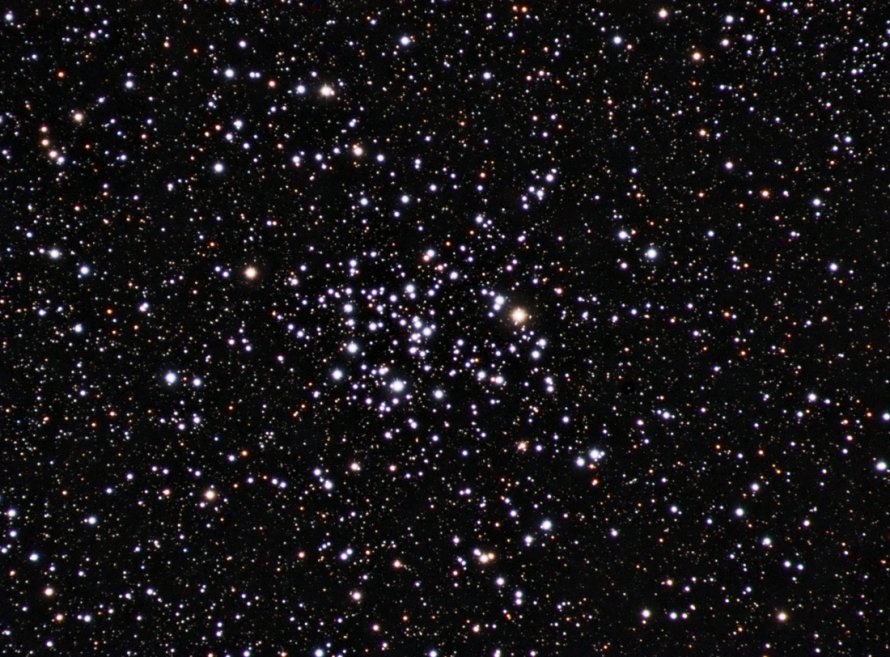M50 (NGC 2323) - Heart-Shaped Cluster
Messier 50 (NGC 2323), also known as the Heart-Shaped Cluster, is an open cluster located in the constellation Monocerus, in the Orion Arm of the Milky Way Galaxy in the Local Group of galaxies. M50 is 2870 light years away from Earth.
M50 is best viewed during winter, is magnitude 5.9, and can be viewed with naked eye (barely). M50 is 16' in apparent size. For reference, the full moon is 30'.
Observing difficulty: Easy
- Name:
- Heart-Shaped Cluster
- Type:
- open cluster
- Constellation:
- Monocerus
- NGC or IC:
- NGC 2323
- Magnitude:
- 5.9
- Viewing:
- naked eye (barely)
- Size:
- 16'
- Distance (light years):
- 2870 LY
- RA:
- 7h 3.2m
- Dec:
- -8 20'
- Season:
- winter
- Milky Way location:
- Orion Arm
- Galaxy group:
- Local Group
- Messier Marathon #:
- 25
* The naked eye can see up to magnitude ~7-8 objects under ideal dark sky conditions.
An In-Depth Look at a Stellar Nursery
Messier 50 (M50), also known as NGC 2323, is a captivating open cluster nestled within the expansive constellation of Monoceros. Offering a treasure trove of stellar curiosities, M50 promises a stunning observation experience for both amateur and experienced astronomers. This article delves into the cluster's characteristics, its place in astronomical history, and tips for its observation.
Historical Overview
Though its discovery is often attributed to Charles Messier who cataloged it in 1772, the M50 cluster's first recorded observation was possibly made by Italian astronomer Giovanni Domenico Cassini in 1711. This open cluster, therefore, represents a significant chapter in the history of astronomical discoveries.
Physical Characteristics and Magnitude
Positioned roughly 3,200 light-years from Earth, Messier 50 is an open cluster, a gravitationally bound gathering of stars that originated from the same giant molecular cloud. The cluster is relatively young by cosmic standards, with an age estimated to be around 78 million years.
It contains more than 200 confirmed members, with many of them being hot, blue-white B-type stars. The overall diameter of the cluster is approximately 20 light-years. M50 has an integrated visual magnitude of 5.9, making it a relatively bright object in the night sky.
Scientific Significance
As an open cluster, M50 provides an excellent opportunity for astronomers to study stellar formation and evolution. Open clusters like M50 are especially interesting because all of their stars are roughly the same age and composed of the same chemical mixture. This allows astronomers to study how mass affects the evolution of stars, as heavier stars evolve faster than their lighter counterparts.
Locating and Observing M50
M50 is nestled within the constellation Monoceros, the Unicorn, which is sandwiched between Orion to its west and Canis Major to its east. The cluster is positioned approximately midway between the bright stars Procyon and Sirius. The relative brightness of M50 makes it an easy target for amateur astronomers with binoculars or a small telescope, especially on a clear, dark night.
With binoculars, M50 appears as a nebulous patch of light. Telescopes, depending on their magnifying power, can resolve individual stars. Larger telescopes, under optimal viewing conditions, may reveal the cluster's rich variety of colors and magnitudes, offering a truly mesmerizing spectacle.



